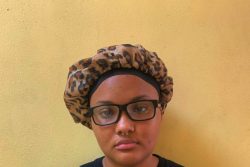Dear Editor,
The evidence of the PPP/C’s perennial and determined commitment and efforts to bring improvement to the lives of our Amerindians in villages and communities are there for all to see.
No decent, honest Guyanese who has followed the history of our Guyana will deny that. Those efforts have been greater than any government of the pre or post-independence period of our country’s history; the PPP/C government has committed extensive resources and has persevered diligently to bringing about positive changes and improvement in the lives of our Amerindian brothers and sisters in the most remote parts of Guyana.
We have, through a continual consultative process, through legislation and by providing resources, restored and guaranteed their right to social and economic services and, very important, their right to the land they have occupied from time immemorial.
It is against this backdrop that I am constrained to respond to the inaccuracies contained in the attempt to paint a picture of neglect of the Amerindians of the Parabara and Masakenari communities of Region 9 by the Stabroek News in its edition of Tuesday, August 17, p 18, lest these misconceptions and half-truths become embedded in the minds of some of our Guyanese (‘Parishara [sic], Masakenari concerned about flood, mining threat’).
The PPP/C government has always committed to ensuring that all Amer-indian communities satisfying the legislative requirement for a grant of state land receive titles to such lands, and furthermore, that those lands are clearly defined and demarcated. These requirements include under Section 60 of the 2006 Amerindian Act that, inter alia, (a) the community must have been in existence for at least 25 years and (b) at the time of the application and for the immediately preceding 5 years, the community comprises at least 150 persons.
The Amerindian community of Masakenari, having met the requirements and having applied to be titled, received a grant of state land amounting to 265 mls2, notwithstanding its small population of 220 persons during 2004. The Parabara community, on the other hand, has not as yet met the legislative requirements.
The PPP/C government has consistently followed the provision of the 2006 Amerindian Act in so far as the determination of the Amerindian communities that have met eligibility requirements for titling is concerned. Contemporaneously, we have provided the level of resources which have allowed the number of titled villages to increase from 74 in 1992 to 96 in 2009, while we continue the process of consultation with other communities that have applied for grant of title to their lands to determine their eligibility as per the legislation.
The PPP/C government has always overtly demonstrated a profound respect for our Amerindian peoples’ right to determine and develop priorities and strategies for the development of their lands and other resources. Thus, the Masakenari decision to have all of its lands under a Protected Area system was and is respected by our government as a peoples’ decision.
Integral to the acceleration of the development process in the villages and communities (and that includes Parabara and Masakenari), has been our greater focus on the provision of social services and economic activities that create employment, provide goods and services and generate income for the people who live and work these lands. Thus, we have supported the villages’expressed desire for the provision of social services, infrastructure and improvement of the village economy.
* The National Hinterland Secure Livelihood Programme initiated through the Ministry of Amerindian Affairs in 15 Amerindian villages and communities in Region One, is aimed at addressing some of the challenges of economic development and diversification in the villages/communities. These challenges include:
a) removing inefficiency of some traditional farming methods and practices;
b) enhancing limited knowledge of managing non-traditional crops;
c) focusing on diversification of crops and food processing technology to cater for ‘periods of shock’; and
d) the need for our farmers in the villages/communities to develop an appreciation for enterprise and to explore opportunities for developing micro-businesses centred around farm outputs.
* Other economic and social activities determined by the villagers and reflected in their development plans, have been facilitated through the annual presidential grants allocated for the first time in 2007 by President Bharrat Jagdeo with an allocation of $150 M for 140 Amerindian villages and communities and increased to $160M for 160 villages/communities by 2009.
* The provision of increased grants under the Low Carbon Development Strategy and the multiplier effect of the investments under the presidential grants, the National Hinterland Secure Livelihood Programme and a number of credit schemes, viz, in Annai and Santa Rosa villages, will undoubtedly over time lead to further employment, earnings and improved living standards of the Amerindian people living in the hinterland.
* The PPP/C government respects and ardently promotes the nature and cultural aspects of the lives of all indigenous peoples and will under no circumstance, deny knowledge-sharing amongst our Amerindians.
* Our programme of education and creating greater awareness of our Low Carbon Development Strategy will continue in the villages and communities and will see the National Toshaos Council taking a lead role in this regard. Further, we will continue to utilize the services of translators where the residents feel more comfortable having the awareness programme done in their language.
The attempt of Stabroek News to paint a picture of neglect in the Parabara/Masakenari villages must be exposed for what it is: a mischievous or otherwise reckless attempt to misrepresent.
Government’s support to Masakenari to construct a school, a health post and to staff both institutions; to upgrade the airstrip at Gunns Strip; to provide a benab to hold meetings and other activities of the village’s choice; to support the village with food, farm tools to the value of $33M during the period of the flood and, more recently, the employment of 37 persons from the village to rehabilitate the Umana Yana at a cost of $16M exemplifies its track record of addressing the needs of our Amerindian people to the extent that our resources would allow us.
Parabara community has not been left out of development process. Over $2M was provided for the clearing of the Parabara trail; while another $2M went to purchase an All Terrain Vehicle (ATV) for the purpose of the transportation of people and goods. In addition there was $1M for a village office; support for the construction of a landing and walkway; and food relief, etc, between 2008 to the present as we sought to work with the people to improve their lives.
The PPP/C government will continue to plough resources to bring improved living standards to the hinterland people, most of whom are Amerindians. Already, these developments are evident to those who would wish to note them. Regrettably, there are some among us who would wish to deny our government the opportunity to ventilate these success stories. But, those who have eyes to see, let them see.
Yours faithfully,
Norman Whittaker MP
Editor’s note
1. Stabroek News simply reported what the Toshaos said.
2. We apologize for the fact that in the SN article of August 17, referred to above, we incorrectly rendered the name of Parabara village as ‘Parishara.’









